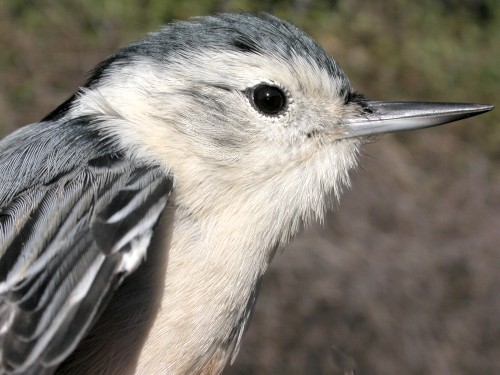|
McGILL BIRD OBSERVATORY |
|||||||||||||||||||||||||||||||||||||||||||||
Welcome to the McGill Bird Observatory weekly report. Click here for a complete listing of our archives. Comments or questions are welcome at mbo@migrationresearch.org.
Banders-in-charge:
Marcel Gahbauer, Barbara Frei Notes: Again this week the wet weather was a serious limiting factor, with full banding possible only on Friday and Saturday. Nonetheless, both banding and general observations yielded interesting results almost daily. Though we are approaching the end of the season, the fall list of species banded this season grew again this week. The White-breasted Nuthatch (photo at the end of this week's report) was long overdue, having been observed at least a few times each week since we began observations at the beginning of August. The other species, however, was another complete surprise. Unlike last week's Yellow-billed Cuckoo, remarkable for being out of its normal range, this week's Red-shouldered Hawk shocked us by being by far the largest bird we've caught to date. Weighing in at 531 grams, it was nearly twice as heavy as our previous record holder, last fall's Pileated Woodpecker. However, it was an incredibly patient and docile bird, taking the whole experience nicely in stride and not once attempting to bite or grab any of us. Census and other observations yielded several more new species for the season this week. The highlight was a Boreal Chickadee seen near the winter nets late on Thursday morning. This species is only rarely recorded in Montreal, but with the large number of Black-capped Chickadees migrating this fall, it appears that a few Boreal are moving with them (one has been seen as far south as Lake Erie). Another unexpected northern migrant was the Bohemian Waxwing discovered on Sunday's census. The first census of the week also held an impressive discovery, an adult Peregrine Falcon perched in one of the trees along the back pond. Later in the week we had our first Pine Siskins of the fall fly overhead, a tiny Cackling Goose dwarfed by the Canada Geese with which it was flying, and a flock of Northern Pintails. The dominant birds at MBO this week were without question American Robin, Slate-coloured Junco, and Red-winged Blackbird. The blackbirds were in full song some mornings, creating an absolute cacophony of sound. Up to 500 robins were seen per day, though their numbers dropped sharply late in the week. Though not as abundant as that, the 50 to 70 Mourning Doves seen on a couple of days represented unusually high numbers for the area. For the second week in a row, American Robin took the top spot with 47 individuals banded. With a single-day record of 27 on Friday, Black-capped Chickadee made it to second place for the week with 37. The remainder of the top five were Slate-coloured Junco (22), American Tree Sparrow (10), and American Goldfinch (9, all on Saturday). Our 3000th bird banded of the season was a hatch-year Hermit Thrush early on Saturday morning. Not surprisingly, the number of species observed this week dropped again, and for the first time this fall included no warblers at all, and just one vireo, a Blue-headed which perched just outside the window as we were recording daily totals on Thursday. The two Gray Catbirds seen on Sunday established a new record late date for this species at MBO. As we move into our final week of the fall season, we expect the transition to the winter bird community to continue.
|


